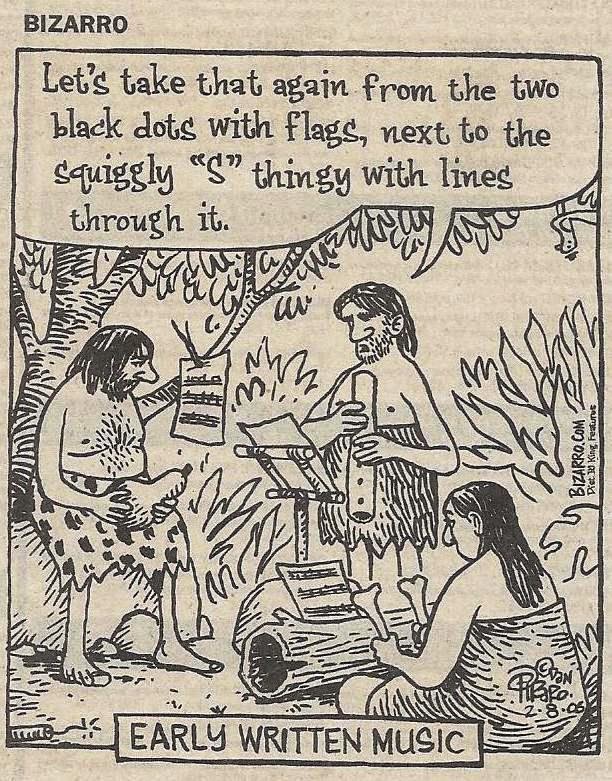 |
| Music is always around. |
The ultimate challenge to the composer is to grasp inspiration, sort it out and then try to make sense of it all so that ultimately the completed work will also make sense to the listener.
Sadly, and too often, music in this random format is regurgitated and foisted upon the unsuspecting ignorant as fine art, when in reality it is nothing more than the disorganized nonsense it really is.
Having stated the foregoing, am I any less guilty of simply compiling more noisy nonsense?
The listener shall ultimately make that verdict.
Work on the 4th piano sonata commenced in 2005 and was completed in 2008.
One
limitation of the music notation program used is the inability to show
assigned metronome settings on printed versions, therefore they are
given as follows:
I Allegro appassionato – 108 quarter notes per minute
II Andante moderato ma cantabile – 72 quarter notes per minute
III Andante ma agitato; Allegretto – 82 quarter notes per minute; 88 quarter notes per minute
Although
titled a piano sonata, the music in both the expected
structure and required harmonic modulations do not in any sense adhere
to the traditional sonata form. Having said this however, a sonata-like
form and structure are evident in each movement.
The
opening theme of the first movement was first conceived in 1974 during
the Vancouver years, but never progressed beyond a forgotten
musical idea jotted down in a music notation book. Thirty-one years
later the ideas finally took shape.
The
Andante movement was incidental music written for Kimberly’s wedding
however, the work was never performed that day. Later incorporated into the
sonata as a slower middle movement, the softer timbres of A flat Major
provide the needed contrast.
Three
attempts were required to finally write and complete the finale. The
incomplete first two versions were unsatisfactory, and have
been set aside as musical compost to possibly revisit at later dates.
“Better is a handful of quietness than two hands full of toil and a striving after the wind.”
(Ecclesiastes 4:6)
Does
the world want or need one more piece of music that will never be good
enough, never be performed, never be heard and never be known?
Music
composition is so often nothing more than a striving after the wind with
two hands full of toil. Perhaps not writing another music composition is
the handful of quietness that our noisy world truly needs.
March 15, 2011
The Oddblock Station Agent
Sample from the opening:







